Posted on April 23, 2014. Filed under: Uncategorized | Tags: linkedin, linkedin training, vaynerchuck |

Have you read Gary Vaynerchuck’s new book Jab, Jab, Jab, Right Hook?
If not, you really must. Gary is, in my humble opinion, the world’s best authority on social media.
The basic premise is that you need to provide your audience – customers – followers with useful, interesting and relevant content 75% of the time and that earns you the right to ask for their business or something in return 25% of the time (the right hook).
This is such great advice because in my experience many LinkedIn users either;
1) Spring out of their corner aggressively swinging repetitive right hooks, failing to ever hit the target and eventually pass out due to exhaustion!
Or
2) Keep jabbing endlessly with no cutting edge until they too pass out!

The only problem with this book for me is the boxing metaphor. Gary is a straight talking New Yorker who has achieved great things from humble beginnings by being a real ‘street fighter’ in the business world. So it makes perfect sense for him to relate his advice to boxing.
I however see things differently and a better metaphor for me would be based on a saying from old friend of mine;
“feed the pigeons”!
Meaning that if you feed the pigeons, more and more will come and before long it will be easy to capture plenty of them….a little cruel perhaps but it has always stuck with me as a great metaphor for content marketing and social media.
The concept (via both metaphors) is pretty easy to grasp but harder to implement.
I think I have been guilty of feeding pigeons without taking any in the past and more recently, whilst launching my new 3 Day Start programme, I have probably been catching too many (or swinging too many right hooks) and potentially scaring off the flock that had gathered!
Its a difficult balance to find isn’t it?
What do you think?
Have you ever been guilty of swinging your right hook too much (or a brutal pigeon massacre!)?
Do you find yourself surrounded by a happy flock of overweight pigeons whilst feeling hungry yourself?
I would love to hear your thoughts on this matter.

Read Full Post |
Make a Comment ( 2 so far )
Posted on December 9, 2013. Filed under: linkedin advice, News | Tags: fake, linkedin, linkedin advice, linkedin help, linkedin profile, linkedin tips, linkedin training, recruiting, social media, social networking, social networks, social recruiting, spam |
 We all get spam, I guess it’s just one of those things we have to put up with as we get more active and become more visible on the Internet, LinkedIn is not immune to spammers and I often receive direct messages from people offering me various products and services. Irritating though it is I tend to view these messages as mildly irritating distractions from the ill-informed. What really annoys me is when I receive Spam from people who have not even got the guts to reveal who they really are!
We all get spam, I guess it’s just one of those things we have to put up with as we get more active and become more visible on the Internet, LinkedIn is not immune to spammers and I often receive direct messages from people offering me various products and services. Irritating though it is I tend to view these messages as mildly irritating distractions from the ill-informed. What really annoys me is when I receive Spam from people who have not even got the guts to reveal who they really are!
A Tale of Two F’s and a Bunny!
This particular example happened in October when I received the message below;
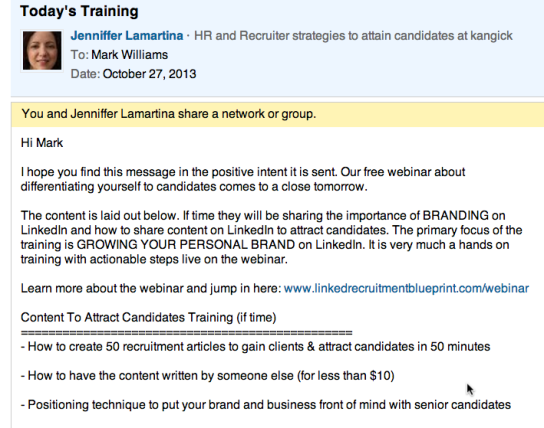
this is a message sent directly to me from someone whom I share a group with and not a connection. What got me immediately suspicious was that the individual had spelt her name in a rather unusual way, I figured it was possible to spell Jennifer with two f’s, if somewhat unusual but you will note (below) that the message is signed from ‘Jennifer’ spelt correctly!

If you had an unusual spelling of a name, surely the last thing you are going to do is make an error and spell it the normal way in a message!
This seemed very suspicious to me so I got interested and investigated further. The message from Jennifer included a link promoting a webinar, that link was as follows;

At this point it is worth mentioning that Andy Whitehead may have simply outsourced the promotion of his webinar and may not be aware of the unethical methodology employed by his service provider.

I have investigated ‘Jenniffer’ in some detail and can find no trace of anyone of this name on the internet. I have performed an image search and her profile picture appears to be unique as well (the quality of the photo is not great so I am betting that it is a tight crop of a group picture)
She was (her profile has strangely disappeared recently) a second tier connection via two people so I contacted both of them and asked if they knew her…..neither did!
Jenniffer’s Profile
(more…)
Read Full Post |
Make a Comment ( 4 so far )
Posted on November 13, 2013. Filed under: linkedin advice, News | Tags: linkedin, linkedin advice, linkedin help, Linkedin Intro, LinkedIn mobile, linkedin profile, linkedin tips, linkedin training, linkedinformed, Mobile apps, podcast |

I was driving my car to a training session, as usual I had my radio on to keep me entertained for the 3 hours I would be in the car. The presenter announced the next song and I thought “Oh no not that awful song again, why do they always play the same rubbish again and again?” so I switched channels…this time the presenter was interviewing an artist who had nothing interesting to say so I switched channels again, this time to a talk station…..they were debating whether we get our bins (garbage) emptied often enough!!
“There must be a better way!” I screamed out loud to myself. “Why am I having to listen to something that someone else chooses for me? My Tony Robbins CD has been played to death and there are only so many CD’s I can carry in my car. I needed a better solution – enter the wonderful world of Podcasts! (more…)
Read Full Post |
Make a Comment ( 10 so far )
Posted on November 5, 2013. Filed under: News | Tags: linkedin, linkedin advice, linkedin help, linkedin tips, linkedin training, mr linkedin, social media, social recruiting |
Following my last post LinkedIn contacted me to clarify their position with regards to the issue of charging job seekers to see the salary of an advertised position.
Their statement in response is as follows;
‘LinkedIn works hard to connect talent with opportunity, and our mission is to make our members more productive and successful in their careers. All the information provided by a job poster about a role is available to all LinkedIn members, whether they’re using the free version of LinkedIn or otherwise. Premium LinkedIn subscribers also have access to information about the likely salary bracket for a particular job.’
So to be clear, there is no salary field in a job posting as such but there is nothing to prevent an advertiser mentioning the salary within the copy of their advert (which I would strongly advise). Where it states ‘get salary range for this job’ below it should more accurately say something like ‘see an average salary range for this job’
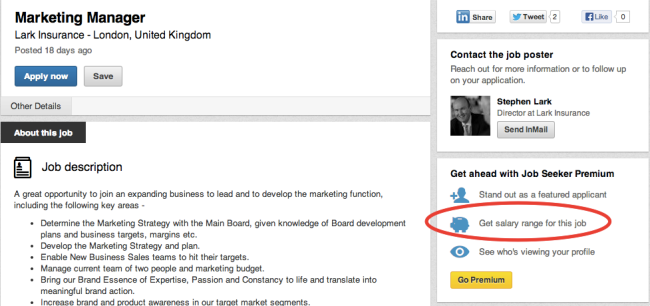
If you view the above ad from any premium account you will see the following;

So it’s not the actual salary but an estimated figure based on information provided by PayScale and is based on job-specific attributes, including industry, title, location, and other factors.
So to be fair to LinkedIn they are trying to provide the jobseeker with relevant information to help them with their application. This could be a useful guide when a salary is not mentioned and even more useful when a salary is mentioned so that they can benchmark the salary against the PayScale average.
As an example the below screenshot is a live job posting that shows a salary in the copy, the premium account holder can clearly see that they are paying below the average (despite their description of it being ‘competitive’)

I’m not too sure what the company who posted this job would make of this but I guess it could work in their favour if they were offering an above average salary.
So there you have it, it’s not quite what it initially seemed and I must thank LinkedIn for clarifying the situation.
It is an interesting feature and I would welcome your views, especially from the point of view of the advertiser.
Let me know what you think by posting a comment below.
If you wish to be notified of further postings by email then please subscribe here
Read Full Post |
Make a Comment ( None so far )
Posted on October 30, 2013. Filed under: News, Uncategorized | Tags: job seeking, linkedin, linkedin advice, linkedin help, linkedin tips, linkedin training, recruitment, social media, social recruiting |
I’m annoyed.
Premium accounts are OK in principle, if you want to pay to use LinkedIn for business purposes then you can make an investment decision. Will you make more money if you pay for a premium account? If not then don’t buy it.
I do however have an issue with LinkedIn showing vacancy ads to job seekers and then expecting them to upgrade their account in order to see the most important piece of information – what salary the job pays!

Not happy with already charging the company to place the ad in the first place, they now want to make extra money by charging the applicant as well!
OK so job seeker upgrades are not the most expensive but its the principle of charging both the advertiser and the applicant that gets me annoyed.

I have advertised vacancies more times than I care to remember in the past and one thing is clear – If you don’t put a salary in the ad’ – the response will be poor, so I can’t imagine the advertisers being too happy about this move either.
This incidentally comes from a company who expect to generate a turnover in the region of $1.5 billion and profits of $364 million this year……it just seems an unnecessary strategy to me that will lose them far more friends than it will make them extra dollars in profit.
Rant over!
What do you think?
Read Full Post |
Make a Comment ( 10 so far )
Posted on October 28, 2013. Filed under: linkedin advice, News, Uncategorized | Tags: internet security, intro, linkedin, linkedin advice, linkedin help, Linkedin Intro, LinkedIn mobile, LinkedIn privacy, linkedin security, linkedin tips, linkedin training, Mobile apps, mr linkedin, privacy, social media privacy |
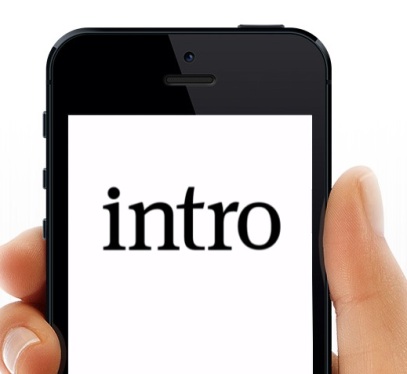
Following on from my last blog introducing this new app, it would appear that various security concerns have been raised so I thought I would share my thoughts on this matter.
In my opinion the internet is full scaremongers and security obsessed people who seem to be able to find fault with just about every new idea/product/advancement. I happen to know that Matt Alder is not one of them so when Matt raised security concerns in the comments of my last blog, I took it very seriously.
Matt’s concerns were based on an excellent article by a very credible organisation called Bishop Fox which I strongly suggest you read.
Unusually for LinkedIn they responded to this article by issuing a statement on their blog which I also strongly suggest you read. This is very unusual for LinkedIn, in my experience they tend to keep quiet about negative comments from others regarding LinkedIn – unless they feel very strongly about it.
I must admit that some of the language they both use is ‘over my head’ but my thoughts on the issue are as follows;
- I am not too concerned about email going through LinkedIn’s servers, I am using Gmail after all which is clearly going through Google’s servers so why should I trust LinkedIn any less than Google?
- To use Intro you actually create a new Mail account within the mail app, this can easily be switched off. There appears to be no other reconfiguring of my iPhone going on but maybe this is hidden from me.
- I did have to give LinkedIn my pin to set up Intro, I’m really not sure why this was necessary and that does cause me some concern but LinkedIn strongly refute the allegation that they change the iPhone’s security preferences.
- Bishop Fox are internet security consultants. It is in their commercial interests to write about such issues.
- LinkedIn would benefit from collecting data about us – such as who we are communicating with via email.
I have therefore decided to continue using LinkedIn Intro (which is after all, very useful!) but only on a limited basis as follows;
- The new Intro account is kept live in the Mail app on my iPhone but I do not use it actively and never send any emails from this account.
- My primary app for email is the excellent Mailbox app which I have been using for some time because it has better features than the native Mail app in my opinion.
- When I receive an email from an unknown source I simply switch over to the LinkedIn Intro account on the Mail app and check the very useful profile information of the sender.
I know its not exactly how you are supposed to use LinkedIn Intro but given all the issues, it feels safer to use it purely as a reference aid rather then as my main Mail app.
I am not suggesting you do the same, my only advice is to make sure you read both articles and make up your own mind.
Read Full Post |
Make a Comment ( 4 so far )
Posted on October 24, 2013. Filed under: linkedin advice, New features, News | Tags: intro, linkedin, linkedin advice, Linkedin Intro, LinkedIn mobile, linkedin profile, linkedin tips, linkedin training, Mobile apps, mr linkedin |

LinkedIn have announced a brand new line up of mobile apps and for the first time ever, they are worth getting excited about!
I will be reviewing the excellent new iPad app soon, this piece however is focussed on their brand new LinkedIn Intro app for the iPhone.
Firstly let me apologise to all of you who are Android or Windows mobile users (or anything else). This product is currently focussed on iOS only and because it is built into the Mail app, I am not sure when or if it will be available on other platforms – LinkedIn didn’t mention anything about this in their presentation.
Apparently the average professional spends 28% of their day dealing with email, this seems an astonishing fact at first but when you think about it you might find you can relate to it….to be honest I’m probably spending more than that in my email! Another fascinating fact revealed by LinkedIn was that more than 50% of emails are read on a mobile device these days and that number is increasing.
LinkedIn are increasingly focussed on mobile so it made sense to introduce an app that links your LinkedIn account to your email account.
In 2012 They acquired a business called Rapportive which is a Gmail plugin that shows you the latest social network updates from whoever you’re corresponding with. I have been using Rapportive for 18 months or so and found it very useful when dealing with emails at my desk but like most people I am increasing managing email on my phone so I have found I am using Rapportive less and less…..Enter LinkedIn Intro.
Intro is integrated into your Mail so that instead of an email looking like this;

It now looks like this;
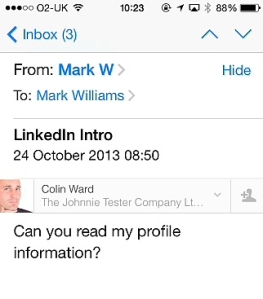
The key difference as you can see is that the LinkedIn profile of the sender is now embedded into the email itself.
If you are not connected to this person there is a link (see arrow below) which gives you the option to connect. DON’T CLICK here! As with all mobile apps, LinkedIn just send the recipient the basic and unfriendly “I’d like to add you to my professional network message” which is poor practice.

However when you click on the profile link you get to see more information from that individual’s profile (see below). How cool is that?

It’s not just clever and cool, it’s really useful. How often do we receive emails from people who we don’t really know? This way we can check out more information about them which allows us to respond more effectively.
Of course this also has an effect on the sender in that it yet again proves just how important your LinkedIn profile is. If you need help with that click here.
I had forgotten how much I missed using Rapportive until I started using Intro today, its fantastic!
Unfortunately it’s not perfect, I have noticed some emails have an intro link that is so small you can’t really read it! See example below;

This above screenshot is larger than it appears on the phone and even then its difficult to read! I can only assume this is something to do with the format of the email and may be fixed in future updates, lets hope so.
So if you have an iPhone, open your browser of choice (Safari perhaps) and go to intro.linkedin.com, follow the installation instructions and once you have had a play, let me know what you think.
Read Full Post |
Make a Comment ( 16 so far )
Posted on July 15, 2013. Filed under: linkedin advice | Tags: linkedin, linkedin advice, linkedin help, linkedin profile, linkedin tips, linkedin training, mr linkedin, privacy, profile, social media, social networking, social networks, spam |
 1. Inviting a complete stranger to connect.
1. Inviting a complete stranger to connect.
Whilst I’m not a fan of LinkedIn’s mantra “only connect with people you know well” it is even worse to invite people with whom you have had no contact. This is the equivalent of going to a networking event and walking around the room shoving your business cards into people’s hands without even saying hello or introducing who you are! The key to successfully growing a network is to always engage in some manner before connecting.
2. Failing to personalise an invitation to connect.
There is nothing worse than receiving an invitation to connect (even from someone you know) that reads “I’d like to add you to my professional network on LinkedIn”. Everyone knows that this is the default message and therefore the person sending it has not bothered to give it any thought or consideration. A personalised message takes literally seconds to write and to not do so is just plain lazy!
3. Profile picture.
It is shocking to see how many people use inappropriate photographs for what is a professional networking site. Your picture is effectively your personal brand logo and is a critical part of your LinkedIn profile, It is almost certainly the first thing people notice and therefore creates that all-important first impression. Your photo should be an up-to-date close-up headshot, period. We do not need to see your partner, kids, pets or a slice of the face of the person next to you who you have attempted to crop out! Do not wear a hat or sunglasses and make sure the quality is clear. Avoid using ridiculous avatars or cartoons, they lack credibility and LinkedIn may suspend your account as this breaches the user agreement . The worst mistake of all however is to not have a profile picture at all, this will result in less profile views and more importantly it significantly damages your authenticity.
4. Anonymous visibility.
This is one privacy setting that everyone should change from the default. You can either be fully visible, largely anonymous (the default setting) or completely anonymous. The default setting makes no sense because you either want people to see that you have viewed their profile or you don’t, tempting their curiosity with a loose description such as “someone in the X function of the Y industry” is pointless! Deciding to be completely anonymous is also a strange decision, this is a networking environment so choosing this setting is effectively the same as going to an off-line event wearing a hoodie and mask! I can accept that there may be a rare occasion where it is clearly commercially unwise to reveal that you have viewed someone’s profile, in which case you can change your settings prior to viewing the profile and then change them back to fully visible again afterwards.
5. Direct selling.
Whilst it could be said that everyone is selling something on LinkedIn (even if it’s just themselves for that next career move), that doesn’t mean that this is a place to directly sell. There is nothing worse than accepting an invitation from somebody only to find that this is swiftly followed by numerous direct messages selling you the latest thing! This may be irritating for the recipient but it is far worse for the sender who is damaging their personal reputation as well as the company they work for and their chances of succeeding to sell anything this way are remote at best.
6. Inappropriate contact having not read somebody’s profile.
This is similar to the above but may not involve selling as such, receiving a direct message informing me about something that is not relevant to what I do or where I am based merely proves that the sender is blindly sending this message to many people without having read their profiles. I often hear from users who are tired of constant approaches by recruiters so they amend their headline to state that they are not interested in job opportunities…..and it doesn’t make the slightest difference, they still get as many approaches!
7. Lack of background information in profile.
We live in an information rich world and we expect to find it easy to gather information about people, places, products etc. When somebody views your profile they are doing so because they want to see more information about you (including your back story). So why would you deny them that opportunity by revealing little about yourself? LinkedIn is not a one way street, if you view somebody’s profile they are likely to view yours and this presents a great opportunity for you to be open and authentic and show them that you are the kind of person that they would wish to do business with. The more you reveal about your background the more likely it is that they will see you have something in common and this can only work in your favour.
8. Inactivity.
This is one of the most common mistakes I come across. Many users sign up, create a basic profile and maybe join a group or two and then…… nothing! This is the equivalent to going to a networking event and sitting in the corner with a cup of tea and not speaking to anyone! LinkedIn is a live and active community of business professionals throughout the world and this presents you with such an exciting opportunity to widen your network, engage with more people and ultimately achieve greater success.
9. Posting links without comment (especially in groups)
This is usually an innocent mistake made by people with the best intentions. They read an article online and decide to share this with their connections and/or fellow group members, the problem is that an article without a comment just becomes noise in a stream that people tend to ignore and the more this happens the more people become disengaged. This can also be as a result of one of the worst things you can do with social media…….. automation! Social media is supposed to be social (strangely enough!) and it is only effective when people talk to each other, not when automated processes fire countless streams of information/articles at people. The solution is very simple, read the article and take a view then post the article with a comment expressing your view and asking for feedback. This works, automation doesn’t.
10. Dodgy Recommendations.
Many online businesses have learnt that customer reviews are an incredibly powerful marketing tool (Amazon, Tripadvisor etc) and LinkedIn provides you with a similar opportunity via recommendations. The problem is that people obtain recommendations from the wrong people. A recommendation will only influence the reader if it is written by somebody that they consider to be credible and credibility comes from you knowing the person well and by them being in a position of authority i.e. a satisfied customer, and ex-boss etc. Too many recommendations on LinkedIn are from colleagues, family members or worst of all, complete strangers! One dodgy recommendation can ruin a profile, so be careful to only seek testimonials from the right people.
What other LinkedIn behaviours drive you mad? please feel free to comment below.
Read Full Post |
Make a Comment ( 33 so far )
Posted on April 11, 2013. Filed under: linkedin advice | Tags: linkedin, linkedin company page, linkedin training |

It’s probably fair to say that up to 2008 LinkedIn was primarily about recruitment. Since then this unique business to business networking platform has developed into a far more holistic site offering its members a vast range of functionality to enable them and their employers to be more productive and successful.
LinkedIn Company Pages have evolved in a similar way. Initially the only practical use of a company page was to advertise vacancies and showcase a great workplace in order to attract ‘followers’ who may one day want to work for you (in effect a talent pool).
In the last few years LinkedIn have added functionality more associated with promoting the company to prospective customers and facilitating engagement with current customers.
The problem is that many organisations haven’t kept pace with these changes and their company page is still managed by their recruiting teams rather than their marketing function.
Can you imagine a situation where a Recruiting/HR department was given control of your website? That would be crazy!
The responsibility for the company brand and communication to the wider world must be the remit of the marketing function.
The Company Profile below is a major blue chip B2B and B2C organisation and it is not an isolated example. In my experience the bigger the company, the more likely they are to be stuck in the ‘LinkedIn is just about recruitment’ bubble and I believe this is damaging their brand.

If you can find your customers and prospects on LinkedIn then you need to take a look at your company page and if it is currently controlled by your recruiting team then you need to politely ask for it back!
There is a lot you can do with a company page these days such as;
- List all of your products and services
- Show recommendations for products services from satisfied customers
- Tailor the content different visitors see when they visit your products/services page
- Build a list of relevant followers who you can engage with
- Show eye-catching ‘on brand’ images on all pages
- Embed Videos to showcase your products
To understand all of the above features and how to implement them correctly I have produced a video tutorial which you can get here
So come on marketers, get control of your page back. Each company profile has its own page for recruitment, so let your recruiters control that but make sure all the other pages are focussed on promoting the whole company and its products.
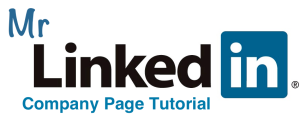
Read Full Post |
Make a Comment ( 2 so far )
Posted on February 15, 2013. Filed under: Uncategorized | Tags: linkedin profile, linkedin training, profile |
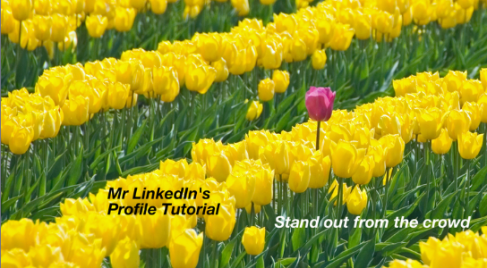
This is an update to my previous post ‘How Important is your LinkedIn Profile?’
LinkedIn recently announced that they had reached over 200 million members, this coupled with the fact they have bypassed the 11 million mark in the UK reinforces the view that LinkedIn is now a pretty mainstream business tool in the UK.
It is for this reason that I believe your LinkedIn profile is more important than ever.
If you wish to grow an effective network, win more business or be spotted for that next exciting job opportunity then you need to ensure that your online presence is impressive and that you are creating the right first impression.
When someone looks for you online (directly on LinkedIn or even via Google), what do they make of you?
- Can they see what you look like? (They won’t remember you if they can’t)
- Is it clear from your headline exactly what you do and what you offer them?
- Is it easy to make contact with you?
- Can they see your full profile?
- Do they know anyone that knows you?
- Can they see impressive testimonials from people that are just like them?
- Will they find you via keyword searching?
These questions and many more are answered in this online tutorial. Over two hours of screen video capture explaining every single section of your profile in great detail.
This tutorial has been updated to incorporate the new changes made by LinkedIn to profiles at the end of 2012.
Order your copy here
Read Full Post |
Make a Comment ( 1 so far )
« Previous Entries









 We all get spam, I guess it’s just one of those things we have to put up with as we get more active and become more visible on the Internet, LinkedIn is not immune to spammers and I often receive direct messages from people offering me various products and services. Irritating though it is I tend to view these messages as mildly irritating distractions from the ill-informed. What really annoys me is when I receive Spam from people who have not even got the guts to reveal who they really are!
We all get spam, I guess it’s just one of those things we have to put up with as we get more active and become more visible on the Internet, LinkedIn is not immune to spammers and I often receive direct messages from people offering me various products and services. Irritating though it is I tend to view these messages as mildly irritating distractions from the ill-informed. What really annoys me is when I receive Spam from people who have not even got the guts to reveal who they really are!












 1. Inviting a complete stranger to connect.
1. Inviting a complete stranger to connect.

